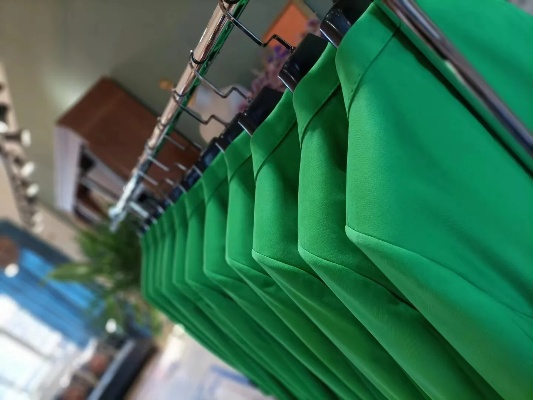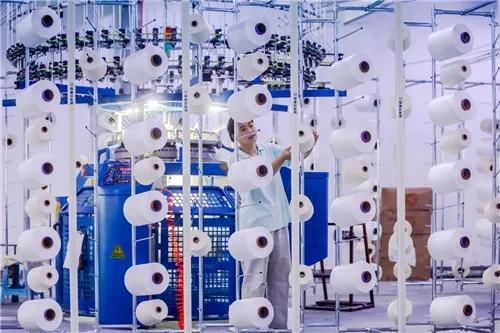The Impact of Phenol Yellowing on Textiles
The study explores the impact of phenol yellowing on textiles, highlighting its detrimental effects on the fabric's appearance and durability. The process of pheno1 Yellowing involves the exposure of textiles to phenol compounds, which can cause a range of problems including discoloration, loss of texture, and reduced strength. The severity of these effects can vary depending on the type of fabric and the concentration of phenol used. In addition, the study also examines the potential solutions for mitigating the negative effects of phenol yellowing, such as using alternative dyes or pre-treatment methods. Overall, understanding the impact of phenol yellowing is crucial for maintaining the quality and longevity of textile products.
In the world of textiles, color is king. But what happens when that color fades over time? That's where phenol yellowing comes in, a phenomenon that can have serious consequences for the quality and longevity of your favorite clothes. In this article, we'll explore the dangers of phenol yellowing and how to protect your clothing from this unsightly and potentially harmful process.
First things first, let's define what phenol yellowing is. Phenol yellowing is a chemical reaction between phenol (a type of organic compound) and natural fibers such as cotton, wool, or silk. When this reaction occurs, the fabric turns a dull, yellowish-brown color, making it look old and worn out. While some people might find this aesthetically pleasing, others view it as a sign of poor quality or even deterioration of the material.
Now, let's talk about the potential harms of phenol yellowing. For one, it can affect the appearance of clothing. A faded, yellowed shirt or dress may not only look bad but also feel rougher to the touch. This could be especially problematic for those who work in professional settings, as a stained or discolored garment could reflect negatively on their image.

Moreover, phenol yellowing can cause health concerns. Some studies suggest that exposure to phenol fumes or residues from products containing phenol can be toxic to humans, leading to respiratory issues, skin irritation, and even cancer in extreme cases. If you're wearing clothes that have been exposed to phenol, make sure to wash them regularly to minimize these risks.
But what happens if you're already wearing clothes with phenol yellowing? It's important to note that while some stains are more difficult to remove than others, there are still ways to restore the color of your favorite outfits. Here's a table summarizing some common methods used to treat phenol yellowing:
| Method | Pros | Cons |
|---|---|---|
| Laundry Soak | Can help break down the chemical bonds causing the yellowing | May require multiple cycles |
| Steam Cleaning | Can remove deep stains but may not always work | Can damage delicate fabrics |
| Chemical Treatment | Often effective but may leave behind unpleasant smells | Can be expensive |
| Professional Cleaning | Safest option but often expensive | Not suitable for all types of fabrics |
One particularly troubling case study involves a woman who wore a shirt with phenol yellowing for years without realizing the extent of the damage. When she finally decided to replace the shirt, she was shocked by the condition it had become. The fabric was so worn out that it was almost nonexistent, and the color had completely faded away. This story serves as a stark reminder that phenol yellowing can go unnoticed for years, making it essential to regularly inspect and clean your clothing to prevent further damage.
In conclusion, phenol yellowing is a significant concern for anyone looking to keep their clothing in top condition. From its impact on appearance to potential health risks, it's crucial to take steps to protect your clothing from this damaging process. By understanding the causes of phenol yellowing and taking proactive measures to address it, you can ensure that your wardrobe stays vibrant and beautiful for years to come. Remember, a little prevention goes a long way in maintaining the quality and lifespan of your clothing collection.
纺织品酚黄变概述
纺织品酚黄变是指纺织品在特定条件下,由于酚类物质的作用而发生颜色变化的现象,这种变化不仅影响纺织品的美观度,还可能带来一系列的危害,本文将详细探讨纺织品酚黄变带来的各种危害及其影响。
纺织品酚黄变的具体危害
-
外观质量下降:纺织品酚黄变会导致颜色褪色、斑点、色泽不均等问题,严重影响纺织品的美观度和使用价值。
-
健康风险:纺织品酚黄变可能含有有害物质,对人体健康构成潜在威胁,某些酚类物质可能具有致敏性,长期接触可能引发皮肤过敏、呼吸道不适等不良反应。

-
环保问题:纺织品酚黄变还可能对环境造成污染,未经妥善处理或处理不当的废旧纺织品可能对土壤、水源和大气造成污染,破坏生态平衡。
案例分析
以纺织品为例,假设某品牌的一款丝绸面料在使用过程中出现了酚黄变现象,该面料在长时间使用后,颜色逐渐褪色,色泽不均,给消费者带来了极大的困扰,这不仅影响了产品的美观度,还可能引发消费者的健康问题,该面料若未经妥善处理或处理不当,还可能对环境造成污染,对生态平衡造成威胁。
预防与控制措施
为了防止纺织品酚黄变并降低其危害,可以采取以下措施:
-
加强质量控制:在纺织品生产过程中,严格把控原材料的质量,确保纺织品在使用过程中不会受到酚黄变的影响。
-
定期检测与评估:定期对纺织品进行检测与评估,及时发现和处理潜在的酚黄变问题。
-
采用环保处理技术:对于废旧纺织品,采用环保处理技术进行回收和再利用,减少对环境的污染。
纺织品酚黄变不仅影响纺织品的美观度和使用价值,还可能对人体健康和环境造成潜在威胁,在纺织品的生产、使用和回收过程中,必须加强质量控制和监测评估,采取有效的预防和控制措施,确保纺织品的安全使用和环境保护,我们也应该加强公众对纺织品酚黄变危害的认识和关注,共同维护纺织品的健康安全和环境可持续性。
Articles related to the knowledge points of this article:
Exploring the Success Story of Nantong Three Sisters Textile Co.Ltd



